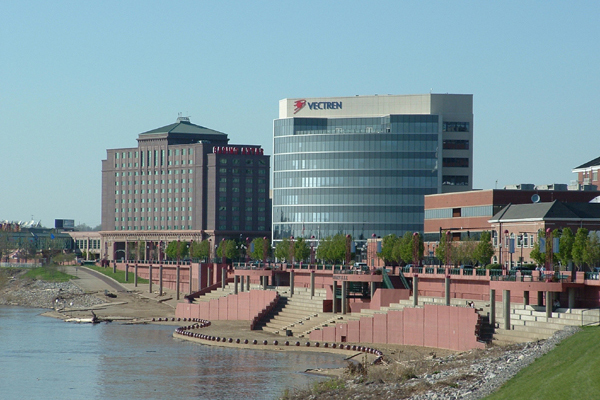
Moving to Evansville, Indiana: A Comprehensive Relocation Guide
Considering moving to Evansville, Indiana? This southwestern Indiana city of approximately 114,000 residents serves as a regional hub on the Ohio River. Here’s your comprehensive guide to relocating to Evansville in 2025.
Demographic Profile to Consider If Moving to Evansville:
Evansville, the Vanderburgh County seat, stands as Indiana’s third-largest city along an oxbow in the Ohio River. Often called the “Crescent Valley” or “River City,” Evansville features a median age of 38 years. The population has experienced slight decline in recent years, reflecting broader Rust Belt trends. Historic neighborhoods surrounding downtown blend with suburban developments extending west and north. The city’s position on the 38th parallel north marks a cultural transition between Midwest and South. The metropolitan area exceeds 300,000 residents across the tri-state region of Indiana, Illinois, and Kentucky. Find trusted local services for moving, living, and working in Evansville.Evansville Relocation Directory
Cost of Living to Consider If Moving to Evansville:
Evansville offers affordable living with median household income around $52,000. Housing costs remain significantly below national averages, with median home values providing accessible ownership opportunities. The poverty rate of approximately 19 percent reflects economic challenges, yet overall living expenses support comfortable middle-class lifestyles. Property taxes and utilities maintain reasonable costs. The combination of affordability and regional amenities makes Evansville attractive for families, retirees, and young professionals seeking value in a city environment.
Economy and Job Market:
Evansville’s diversified economy includes healthcare, manufacturing, education, and service sectors. Major employers include Deaconess Health System, St. Vincent Evansville, Berry Global, Toyota manufacturing operations, and the University of Evansville. The defense industry maintains significant presence with naval support activity. Manufacturing employment includes automotive components, plastics, and food processing. Healthcare employs over 9,000 workers, while manufacturing and retail provide additional jobs. Recent unemployment rates hover around 3.6 percent. Economic development efforts focus on attracting advanced manufacturing and logistics operations leveraging the city’s river port and interstate access.
Education:
Evansville Vanderburgh School Corporation operates five traditional high schools, eleven middle schools, and twenty elementary schools. The district includes specialized programs such as Signature School, a nationally ranked STEM-focused institution. Catholic and private schools supplement public education. The University of Evansville, a private institution, and University of Southern Indiana, a public university, provide higher education. Indiana University School of Medicine maintains an Evansville campus. Ivy Tech Community College offers vocational training. The educational infrastructure supports workforce development and academic achievement.
Recreation and Lifestyle:
Evansville’s position on the Ohio River creates scenic waterfront areas and recreational opportunities. Mesker Park Zoo and Botanic Garden ranks among Indiana’s oldest and largest zoos. The Ford Center downtown hosts events and University of Evansville basketball. Bally’s Evansville casino provides entertainment and gaming. Angel Mounds State Historic Site preserves prehistoric Native American earthworks. The Evansville Museum of Arts, History & Science enriches cultural life. Numerous parks, trails, and golf courses support outdoor recreation. Downtown’s Main Street features restaurants, shops, and historic architecture. The city hosts festivals celebrating its river heritage and diverse community.
Healthcare and Services:
Deaconess Health System and Ascension St. Vincent Evansville provide comprehensive medical services including emergency care, trauma services, cardiac care, and cancer treatment. Multiple hospitals ensure healthcare access throughout the region. The medical community includes specialized physicians and outpatient facilities. Healthcare quality meets regional and national standards, with teaching hospital affiliations supporting medical education and research. The sector employs thousands and anchors the regional economy.
Transportation:
Interstate 64 runs north of Evansville, connecting to Louisville and St. Louis. U.S. Route 41 provides north-south access through the city. The completion of Interstate 69 significantly improved connectivity to Indianapolis. The Metropolitan Evansville Transit System (METS) operates fixed-route bus service throughout the city. Evansville Regional Airport offers daily flights to major hubs. The city’s river port supports barge traffic and regional logistics. METS provides public transportation serving residents and visitors.
Conclusion:
Moving to Evansville in 2025 provides access to Indiana’s third-largest city with Ohio River charm, affordable living, and regional economic strength. The combination of diversified employment, cultural amenities, healthcare excellence, and cost of living makes Evansville appealing for families and professionals seeking southwestern Indiana’s largest urban center with small-city character.

